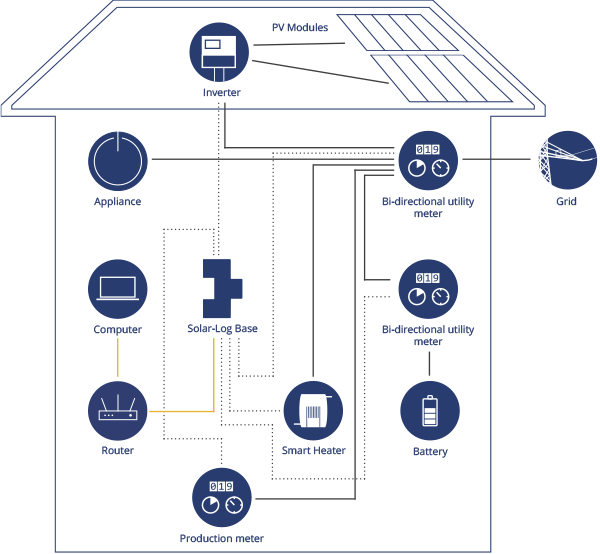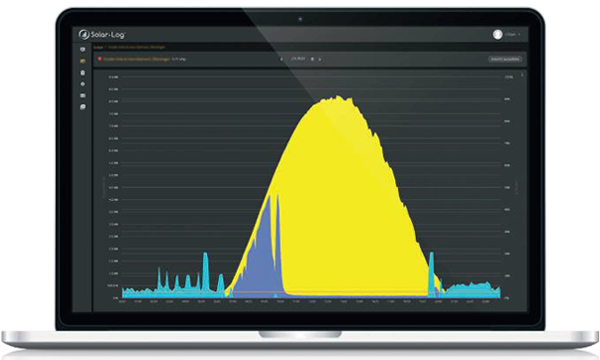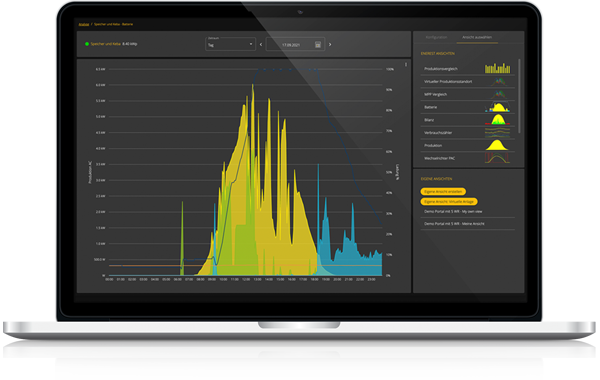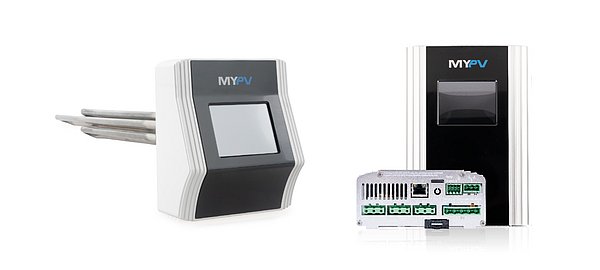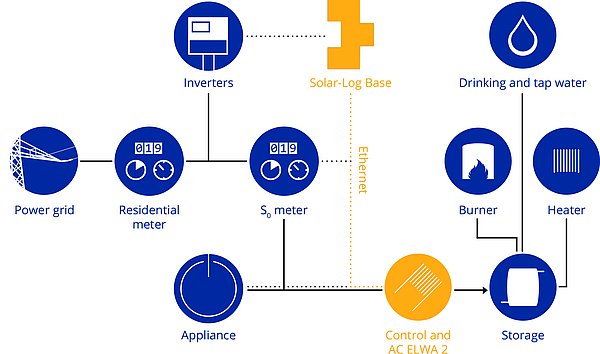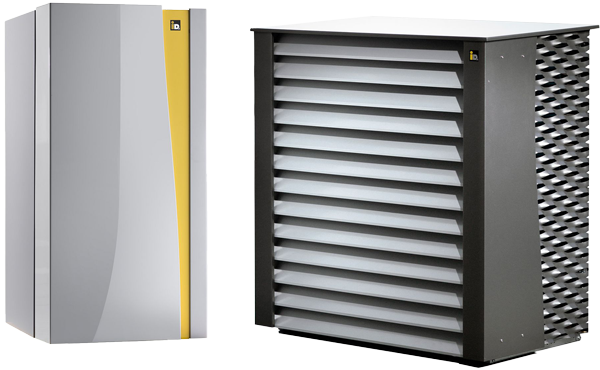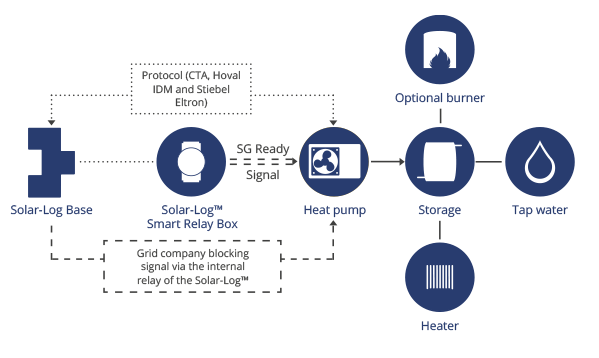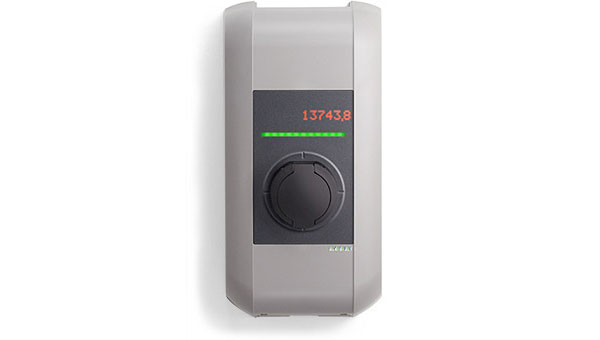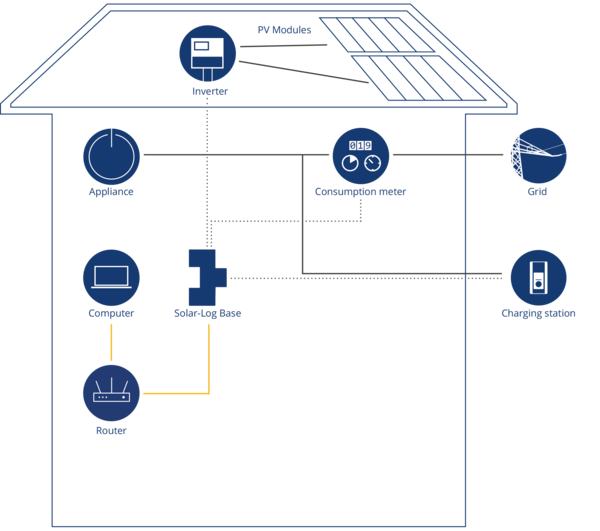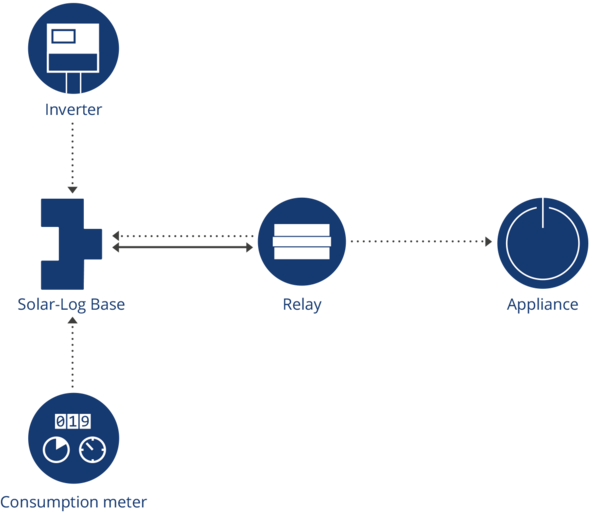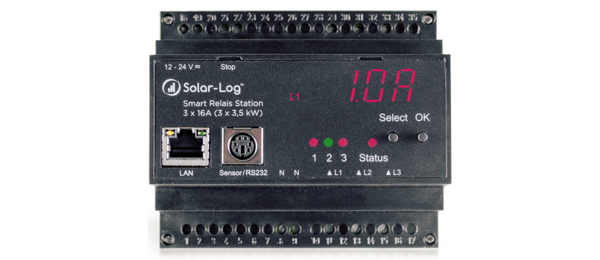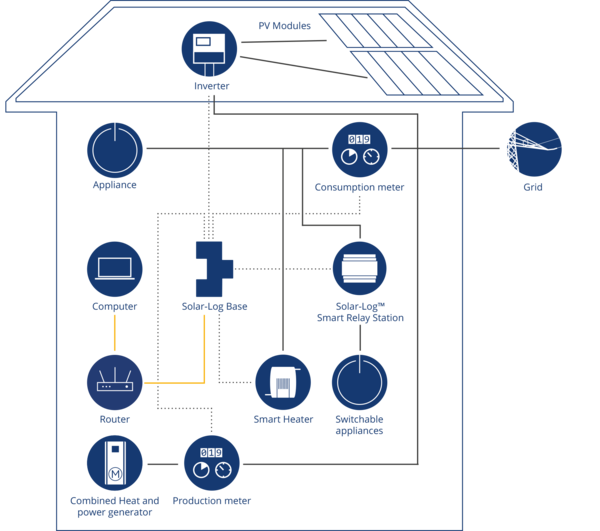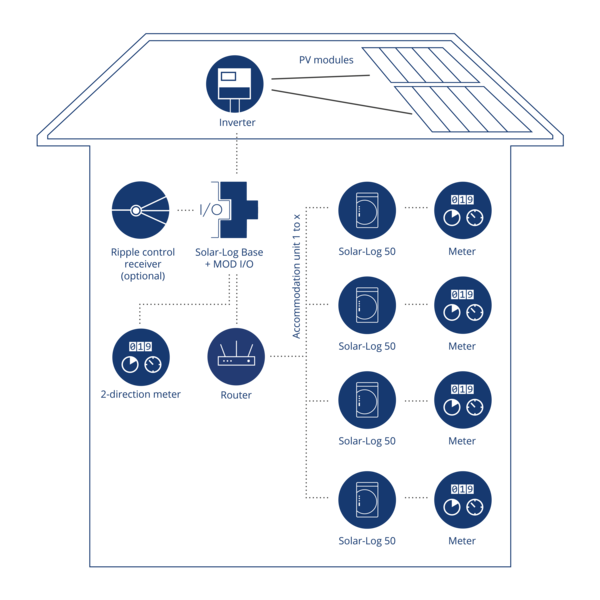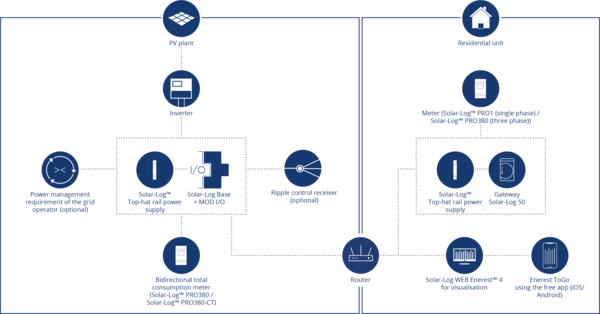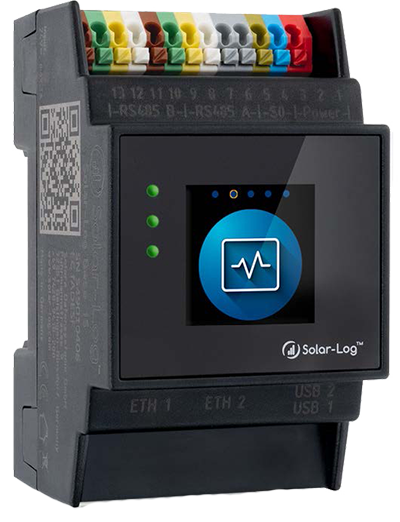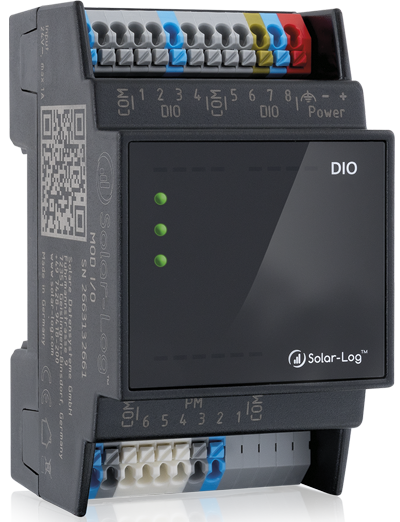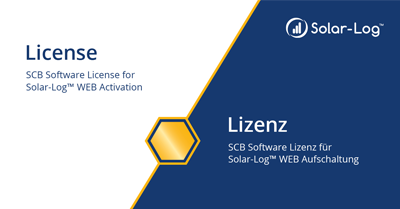Intelligent Heating with PV Electricity
Heating Rods and Solar-Log™
PV energy can be used in a variety of ways, including to generate hot water in conjunction with the Solar-Log™ and a heating rod. This allows you to use your PV energy optimally and efficiently yourself instead of feeding it into the public grid.
Here too, the Solar-Log™ offers various compatibility options with manufacturers. For example, by combining the Solar-Log™ and the AC ELWA 2 from my-PV, surplus PV power can be used to heat drinking water or combination storage tanks.
The power is regulated continuously from 0 to 3,500 W depending on surplus by the Solar-Log Base. Particularly in summer and in the transitional period, the combination increases the degree of self-sufficiency. During this time, it is often possible to completely dispense with fossil fuels for conventional water heating. The minimum temperature of the hot water tank can be defined via the device configuration. Thus, hot water can always be provided regardless of the available PV surplus. The AC ELWA 2 can be conveniently configured via the web interface of the Solar-Log Base.
The AC•THOR (0 - 3 kW) and the AC•THOR 9S (0 - 9 kW) are infinitely variable control devices for hot water, electrical heat sources and optional heating. For example, in combination with the Solar-Log™, the AC•THOR or AC•THOR 9S photovoltaic power manager controls an already installed heating element or a new screw-in heating element (often called a heating cartridge), depending on the PV energy and hot water requirement - for maximum self-utilisation! The same is also possible with the AC ELWA 2, where power electronics and heating element are combined in one product - also possible using Solar-Log™.
